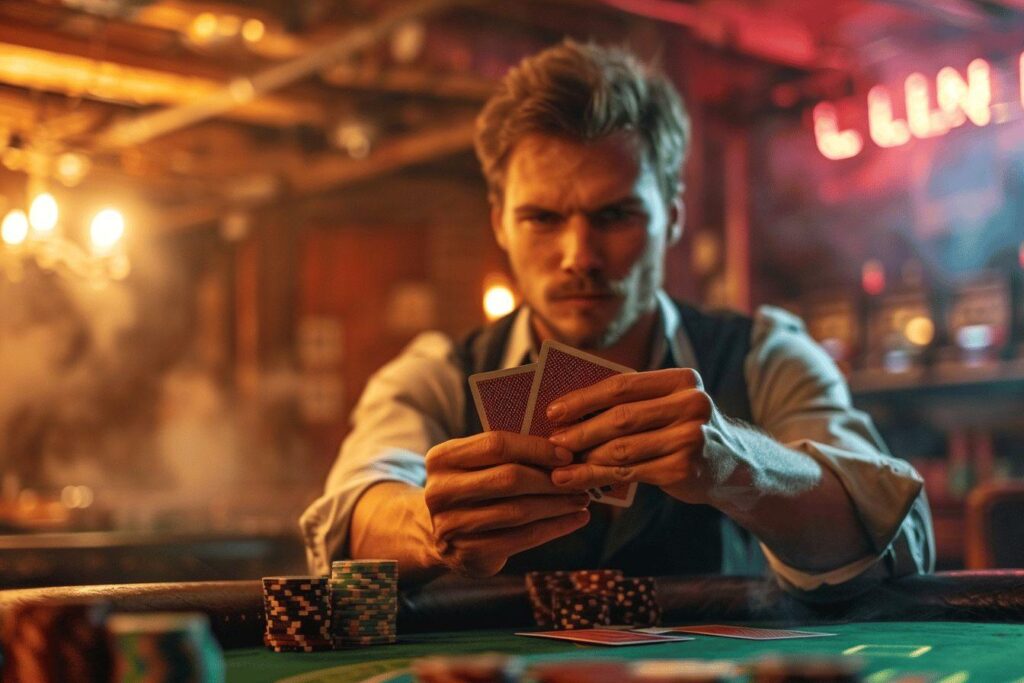Movies like Molly’s Game and Rounders showcase some serious poker face-offs. They show high-stakes tension, slow-rolled bets, and quiet stares. The writers give us characters who risk it all on bold bluffs and risky river moves.
But what happens after people watch these films? A lot of new players jump online and try to recreate movie moments. Like Mike McDermott or Molly Bloom, many want to feel clever by fooling a table full of strangers with one killer bluff.
Spotting a Bluff Isn’t Like the Movies
Hollywood doesn’t show how real-life bluffing works when players are seated in front of their screens. Bluff attempts in poker scenes usually involve dramatic stares and long silences. There is no eye contact in poker games online. Players use things like strange bet sizes or weird timing instead. A wild river raise may look like a scene out of Rounders, but it’s more likely to be a calculated move online.
Some new players come to online poker games expecting their own big hero call moment. What they find are data-driven decisions, instant folds, and very little small talk. The biggest bluffs tend to come from those who understand betting patterns and game flow.
Online poker is more about consistency and analysis. Professionals rely on HUDs (heads-up displays) and past hand histories to assess behavior. Players track fold percentages and continuation bets, not just gutsy calls. Bluffing in the digital age requires mastering stats, not just acting cool.
Is Hollywood Bluffing Too Much?
Bluffing works—just not the way you see in movies. Pro players use statistics, betting ranges, and patience in real poker. Bluffing is not the main event. It’s a side tool, used sparingly and strategically. Most poker hands do not end with fireworks.
Movies often show characters winning pots against the odds. This dramatizes poker but gives new players false hope. Trying to out-bluff every hand gets expensive fast.
Celebrity scenes—like Bond’s full house against a straight flush—add to the myth. They make it look like big moves always win the day. In truth, good play comes from folding more and bluffing less.
Even when bluffing is involved, it’s part of a carefully crafted long-term strategy. In tournament settings, bluffing is just one piece of the puzzle—and misusing it can end your run early.
How Offline Drama Shapes Online Play
Poker movies created a wave of new fans and players. The pool of online grinders is bigger than ever, thanks to the buzz from Netflix, Amazon, and more. Studios keep putting out new drama series and documentaries. The Hold’em Kid and All In are just two examples bringing fresh stories and more hype.
New players often chase the big move over solid strategy. Poker pros keep telling beginners to learn the basics: play position, manage your stack, and be selective. But the draw of a movie-worthy bluff can be hard to resist.
It’s also worth noting that the online poker environment has evolved with security features like random number generators (RNGs) and AI-based cheat detection. This adds another layer of realism that makes movie-style bluffing even less effective.
The New Poker Cinema
Movies put poker on the map. However, social media keeps it there. TikTok is flooded with highlights featuring jaw-dropping hero calls and clever bluffs. These clips keep fans engaged and even expose tactics like online bet sizing tells and timing tells that old-school poker films never covered.
Live-streamed tournaments and viral hands keep more people watching online games than ever. The biggest stars are not from Hollywood, but from poker itself. Players like Phil Galfond or Lex Veldhuis show real bluffing—with no movie magic.
Even platforms like Twitch and YouTube have helped shape how bluffing is perceived, showcasing hands with commentary and analysis rather than slow-motion replays and soundtrack build-ups.
Are Poker Movies Good Teachers?
Poker movies can make the game look cool. But they are not textbooks. Strategy books, training videos, and poker forums are still the best tools for real learning. The best movie scenes may give you a taste of what’s possible—but they don’t show the grind it takes to win.
New players need more than cinematic flair. They should study hand histories, practice smart bankroll management, and follow top streamers. These steps build real skill—something even the best Hollywood director can’t script.
Understanding hand equity, pot odds, and the mental game gives players a real edge. Unlike movie characters who succeed on instinct, real players thrive on preparation and discipline.
Conclusion: Beyond the Bluff
Movies started a poker buzz and brought in a new generation of bluffers. However, the truth about bluffing online is far from the silver screen. In real games, the biggest wins come from discipline, not drama.
Poker is a game of information, probability, and emotional control. The sooner a player understands that the best bluff is often the one never made, the better their results will be. Watch the movies, enjoy the drama—but leave the Hollywood bluffs on the screen.


